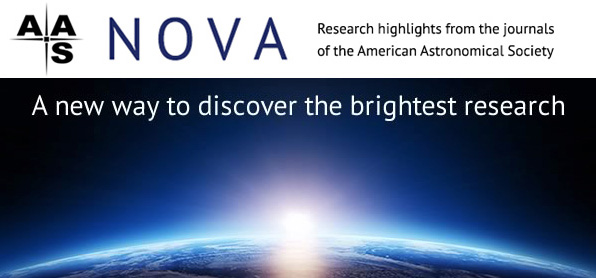Highlights from AAS Nova: 6-19 May 2018

Susanna Kohler American Astronomical Society (AAS)
AAS Nova provides brief highlights of recently published articles from the AAS journals, i.e., The Astronomical Journal (AJ) and The Astrophysical Journal (ApJ), ApJ Letters, and ApJ Supplements. The website's intent is to gain broader exposure for AAS authors and to provide astronomy researchers and enthusiasts with summaries of recent, interesting research across a wide range of astronomical fields.
The following are the AAS Nova highlights from the past two weeks; follow the links to read more, or visit the AAS Nova webpage for more posts.
18 May 2018
Disentangling the History of the Magellanic Clouds
New images of the faint outskirts of the Milky Way’s largest satellite galaxies reveal the extent of their complex interactions.
16 May 2018
When Is Moving Dust Unstable?
Dust grains in fluids can be found in protoplanetary disks, stellar interiors, and even near black holes — and we may be missing important behavior of these systems.
15 May 2018
Antineutrinos, Left-Handed Molecules, and You
Earth life has a definite preference for particular kinds of molecules. Astrobites reports on where life got its taste for left-handed amino acids.
14 May 2018
Featured Image: Simulations of a Thin Disk
Accretion disks — which include everything from protoplanetary disks to disks around supermassive black holes — are notoriously challenging to model.
11 May 2018
Data: Insights and Challenges in a Time of Abundance
One of the most rapidly evolving elements of astronomy research is how we handle data. A new Special Issue of ApJ Supplements looks at related challenges and resources.
9 May March 2018
Sizes of Black Holes Throughout the Universe
Can black holes of any mass exist, or are there gaps in their possible sizes? Mergers may play a large role in the answer to this question.
8 May 2018
A Naked-Eye Superflare Detected from Proxima Centauri
Astrobites reports on the largest flare ever detected from the Sun’s closest neighbor, Proxima Centauri.
7 May 2018
Finding A Planet Through the Dust
Finding planets in the dusty and crowded galactic center is a difficult task! A new study demonstrates the use of infrared microlensing surveys for discovering exoplanets.


